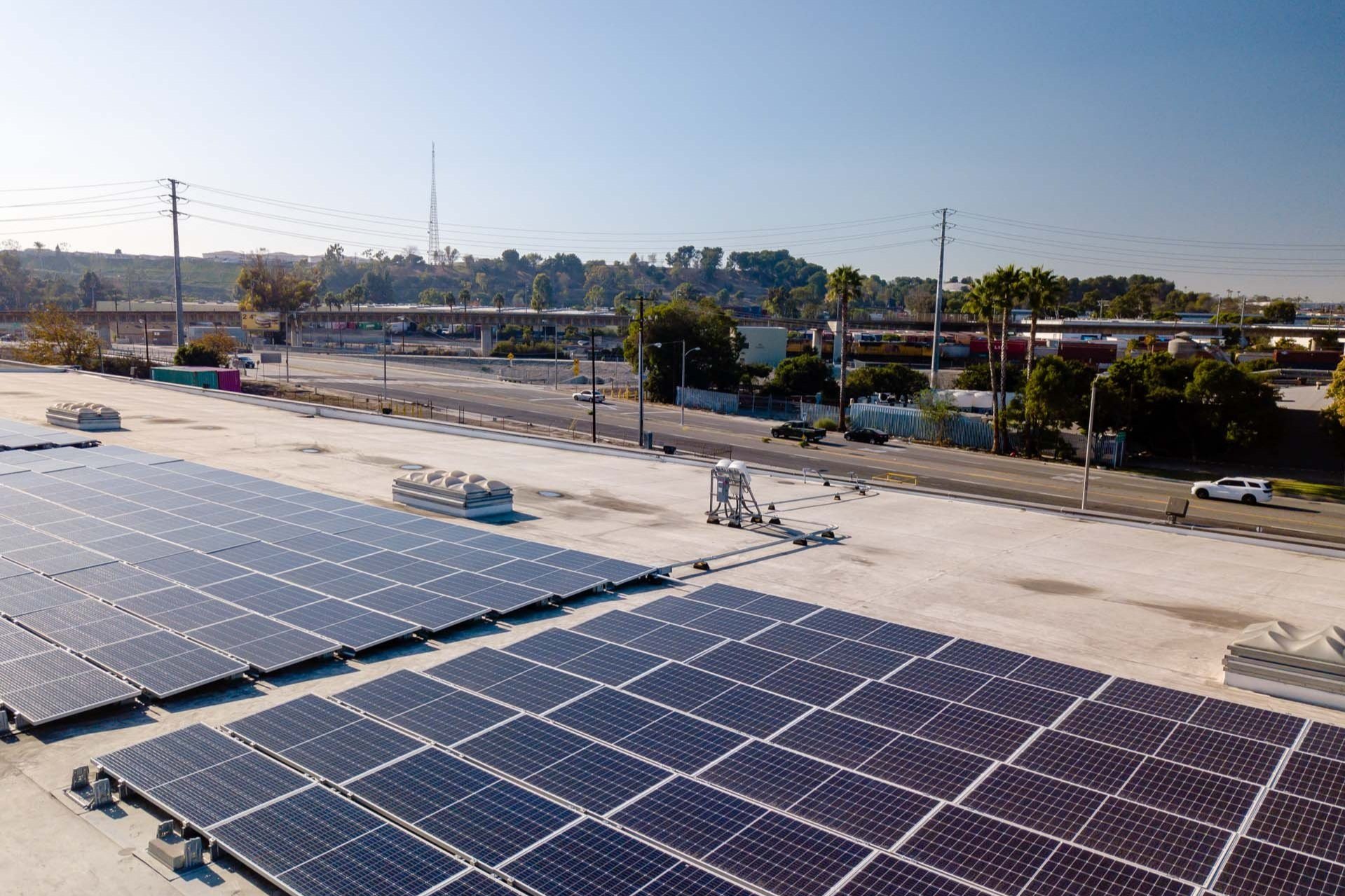Microgrids are making a comeback - here’s why.
Did you know that microgrids are older than the U.S. electricity grid?
Our current electricity grid relies on large central plants to produce energy, which is then distributed to customers hundreds of miles away. However, over 100 years ago, before much of this grid infrastructure was built, microgrids were the norm: Small distributed plants would produce energy that was consumed locally.
Fast forward to today, and the costs of maintaining our aging central grid have skyrocketed. What’s more, it is increasingly unable to deliver cost effective reliable power in the face of a changing climate and extreme weather events like wildfires and hurricanes. In response, the industry is starting to revert back to a decentralized energy system, where energy is once again produced and consumed locally.
The building block for energy that is produced, stored and consumed locally is the microgrid. In this article, we review what a microgrid is, its numerous benefits for consumers, the central grid and the environment.
What is a microgrid?
The Department of Energy defines a microgrid as “a group of interconnected loads and distributed energy resources (DERs) within clearly defined electrical boundaries that acts as a single controllable entity with respect to the grid.”
If you’re still not sure what a microgrid is, you’re not alone! This definition, like other industry definitions of a microgrid, is purposefully broad and ambiguous for good reason. Simply put, microgrids are the chameleons of the electricity world: They can be a wide range of sizes, made up of different technologies, and vary in application and connection to the grid.
Size: Microgrids are sized based on the needs of the end customer. They can serve a single facility that provides power to multiple customers or even entire communities.
Fuel: Microgrids can be composed of different combinations of DER generation technologies, such as CHP, solar, wind, hydropower, and even fuel cells. Batteries are often included to increase flexibility and maximize onsite energy consumption.
Application: Depending on the technology, size, and needs of the end customer, microgrids can provide a number of services, including reliable power for communities, facility resiliency, and low-cost operations.
Grid interface: A grid-connected microgrid can provide energy to its host or coordinate with the central grid, whereas an off-grid microgrid is built without any connection to the central grid.
Despite its many forms, a microgrid always has three key traits:
Distributed energy: In contrast to traditional generation that must travel from a central source, a microgrid provides a source of local, distributed energy to onsite or nearby users.
Independent operation & backup power: A microgrid can operate independently from the central grid. For grid-connected microgrids, this means an “islanding” capability to disconnect from the grid to provide power during grid outages. Off-grid microgrids, which are less common in C&I use cases, always operate without connection to the grid.
Advanced control: Software is required for a microgrid to reliably coordinate energy generation, storage, and consumption, as well as optimize the system for economics, user preferences, and resiliency.
What are the benefits of microgrids?
Microgrids are reliable. By producing energy on site, you will have reliable, local energy that supports your facility’s operational needs. Microgrids also improve the reliability of the central grid by reducing strain and congestion.
Microgrids enhance resiliency. When the grid goes down, your microgrid provides your facility with seamless power supply, which helps you avoid costly downtime and disruptions to critical operations.
Microgrids cut costs. By consuming the energy generated by your microgrid during normal grid operation, you directly reduce your demand for grid energy. This lowers your overall monthly utility costs and minimizes your exposure to future electricity rate increases. Advanced microgrids can also optimize your energy generation and consumption to reduce peak demand, lower demand charges, or even earn extra revenue by participating in utility demand response programs.
Microgrids reduce environmental impact. Most microgrids incorporate at least one type of renewable energy, such as solar or wind. CHP is also considered sustainable, as it can reach up to 90% operational efficiency. CHP also encourages renewable energy integration, as it can mitigate the intermittent generation of these technologies. Energy storage can maximize self-consumption of renewable technologies by storing any excess produced energy for later use.
Microgrids embody holistic energy management. Microgrids integrate a facility’s system and building controls with renewable energy, CHP, energy storage into a single energy ecosystem. This holistic approach to energy management enables higher efficiencies, lower costs, and optimized system operations.
Creating your microgrid
The beauty of a microgrid is that it is not bound to a single technology, size, or application. Depending on your facility’s energy needs, a good microgrid design integrates a combination of technologies to provide maximum operational, economic, and environmental benefits to your organization.
Here at Promise Energy, we specialize in holistic energy systems. We are deeply experienced in finding end-to-end solutions that are customized to any organization’s operational needs, sustainability goals, and budget. Our value comes from our unique process, where we integrate all components of a building envelope and systems to reduce costs, enhance efficiency, and optimize operations.
To learn more about how your organization can benefit from a customized microgrid solution, contact Promise Energy today.
At Promise Energy, we don’t believe that one size fits all. We pride ourselves in designing and installing customized energy solutions that provide the greatest long-term value and energy control for our customers.



